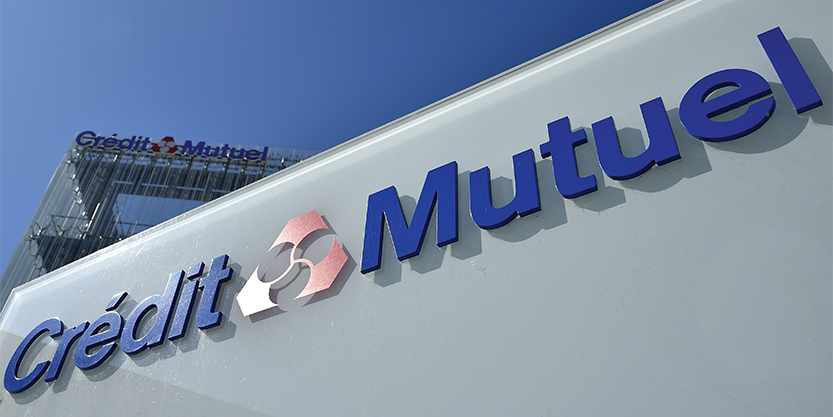French banks started 2020 in a generally buoyant mood. Most of their key performance metrics improved over the previous 12 months with profitability, asset and Tier 1 capital growth all looking healthy – results achieved despite the difficulties posed by negative interest rates and the pressures of a changing regulatory landscape.
But the spread of the Covid-19 virus across France, and beyond, has almost certainly dented the sector’s near- to medium-term prospects. With economic activity in the country brought to an effective standstill, as elsewhere, the outlook for the remainder of 2020 will depend to no small degree on the government’s response to the crisis.
By the middle of March, economic support measures included €45bn-worth of support for the country’s corporate sector, while the central bank, the Bank of France, will help companies to negotiate debt rescheduling with their banks. Additionally, Bpifrance Financement, the state-owned investment bank, will offer guarantees on about €300bn of new credit facilities issued to private sector entities in need.
The Bank of France is also taking steps to ameliorate the operating environment. This includes the lifting of a countercyclical capital buffer on banks (which was set to increase to 0.5% from 0.25% in April 2020) in order to boost lending to households and businesses, among other measures.
Implications for lenders
Despite these interventions, the nationwide closure of all non-essential businesses could hit the fortunes of French banks. Research from rating agency Moody’s indicates that small and medium-sized enterprises employ about 50% of the country's workforce and half of all loans to the corporate sector are allocated to this business segment.
Moody’s notes in its March 2020 French banking sector comment: “We expect the [government’s] measures to stem a potential wave of bankruptcies and therefore defaults in banks’ loan books. However, banks’ credit losses will likely rise nevertheless, and the magnitude of the increase will depend on the length of the crisis.”
The gravity of the situation facing French lenders, and their peers elsewhere on the continent, is severe. But the French banking system is in robust health and is dealing with this crisis from a position of strength. Its common equity Tier 1 capital ratio was 14.5% at the end of the third quarter of 2019, according to data from the European Central Bank (ECB). Meanwhile, the ratio of non-performing loans was just 2.6% over the same period. The Banker’s Top 1000 World Banks ranking for 2019 depicts the system’s strength clearly: five of western Europe’s top 10 banks by Tier 1 capital are French, meaning the country’s banks have also become Europe’s heavyweights in the global ranking.
A prudent banking culture, coupled with the well-diversified business models of most French lenders, accounts for this underlying strength. Indeed, the variety of business lines that make up the operations of most French banks have played an outsized role in driving profitability during a period of sustained negative interest rates. In recent times, the country’s lenders have outperformed the eurozone average in terms of return on equity. Data from the ECB indicates that the French banking system posted a 6.32% return on equity in the third quarter of 2019, against a regional average of 5.83%.
Diversification is key
Interviews conducted with French banking executives in February highlight the system’s strengths. “A feature that is common to all French banks is that they have adopted models which make them universal, with many business lines and activities. They aren’t focused exclusively on traditional lending activities. That helps to mitigate the impact of today’s low interest-rate environment. This in part explains the resilience of the French banking system compared with other systems, which are much more focused on traditional lending,” says Xavier Musca, deputy chief executive officer of Crédit Agricole.
For its part, Crédit Agricole enjoyed robust growth in 2019. Underlying revenues were up by 3.3%, while underlying net income expanded by 4% over the period. Encouragingly, the bank notes that it received a positive contribution from all business lines to its yearly results. “In my view, the good results of last year, and previous years, illustrate the strength of our strategy. First, we are a large bank. We benefit from this size effect. On retail, for example, we represent roughly one out of four French households,” says Mr Musca.
The lender has also advanced its position beyond the domestic market in 2019. In an arrangement with Spain’s Santander, the two banks agreed to combine their custody and asset servicing operations. The new unit, which is maintaining the name of Crédit Agricole’s existing business, Caceis, will have about $1300bn in assets under custody. Under the merger, which was concluded in December 2019, Crédit Agricole owns 69.5% of the new entity, while Santander holds 30.5%.
“The second reason why we are succeeding is that we have designed a strategy in which we are pursuing consolidation at the European level but not in the traditional way. Rather, we are doing this by consolidating business lines. This means that we prefer to enter into markets by building partnerships and by expanding our different business lines with in-country partners,” says Mr Musca.
Other lenders have also performed well. Crédit Mutuel Group enjoyed a strong set of results in 2019, with total net profit reaching a historic high of €3.8bn, marking an increase of 7.8% year on year. This was accompanied by a 3% rise in net banking income and a 1.6 million increase in the customer base of the group and its subsidiaries. The group’s leadership attributes this success to having a diversified business model.
“Our strategy to increase our net banking income is to diversify our service and product offerings. For more than 100 years we have been a bank, and for over 40 years we have also been an insurance company. And if you go in any Crédit Mutuel branch you will find people who are bilingual in terms of banking and insurance, which is very important,” says Pierre Edouard Batard, chief executive of Confédération Nationale du Crédit Mutuel.
Demand for credit
Strong credit demand has helped to lift the performance of most French banks in recent years. As the expanding economy has stimulated job creation and wage growth, households and corporates alike have looked to benefit from the prevailing low interest-rate environment. Research from Moody’s indicates that the pace of credit growth has been between 4% and 6% per year since 2015.
As a result, French banks have profited from high lending volumes, even if competition between them has pushed margins lower. This situation has partly contributed to elevated levels of private sector debt, which reached 148% of gross domestic product at the end of 2018. Nevertheless, Moody’s notes that French corporates generally have high cash buffers, mitigating any challenges posed by this situation.
“Credit dynamics remain strong because the low interest-rate environment is stimulating demand for home loans. French companies are also investing domestically, which is supporting this trend,” says Mr Musca.
While French banks undoubtedly posted a strong set of results in 2019, cost-to-income metrics were widely accepted as needing improvement. ECB research shows that, compared with regional peers, the aggregate cost-to-income ratio of the French banking sector remains high, at 71.6% compared with an average of 65.4% in the third quarter of 2019. Factors behind this difference include elevated restructuring costs in some cases, contributions to the EU’s Single Resolution Fund (a mechanism for bank resolution) and investments in digital transformation initiatives, among others.
Digital transformations
In particular, some French lenders are now investing heavily in their digital capabilities with a view to improving operational efficiency. While this could significantly improve their cost-to-income numbers, it will also go a long way to augmenting back-end operations as well as front-office products and services. As such, most of the country’s largest lenders have prioritised these plans.
BNP Paribas, for example, spent €2.7bn on a digital transformation programme between 2017 and 2019. Among other outcomes, this has seen the bank digitise much of the customer journey, contributing to an increase in digitisation of its products and services. It has also led to the widespread use of new technologies, including robotics and artificial intelligence (AI), across its business lines, as well as partnerships with fintechs to encourage new product and service developments.
“The digital transformation has changed every aspect of our business,” says Jacques d’Estais, deputy chief operating office and head of international financial services at BNP Paribas. On the retail front, BNP Paribas had 5.1 million customers active on its mobile apps across its banking footprint in 2019, marking an increase of 31% year on year. Meanwhile, the automation of processes continues, with more than 700,000 transactions a month processed by robots at the end of the fourth quarter of 2019.
“Today, when we log data in our systems, it has to be ready for AI. It was not the case before. So we are now organising our data so that it can be harnessed by AI to improve the way the bank functions. This is one example of the way in which we have transformed,” says Mr d’Estais.
Investment into the bank’s digital capabilities has contributed to a cost saving of €1.8bn since the launch of the digital transformation plan in 2017, and savings of about €1.5bn are expected in 2020. “We made a big investment and now we are seeing the benefits,” adds Mr d’Estais.
In tandem with the bank’s internal transformation, BNP Paribas has also reached out to work with fintechs. Through a partnership with US accelerator programme Plug and Play, in Europe’s largest campus for start-ups, known as Station F, the bank is supporting the industry's fintech groups. This is helping nurture the next generation of business talent and producing a pipeline of products, services and solutions that can be applied to its own operating model.
This commitment to digital transformation, coupled with the bank’s diversified business model, helped BNP Paribas to increase its revenues by 4.9% in 2019, while net income expanded by 8.6% and its cost-to-income ratio fell by 1.7%. “The strength of BNP Paribas over the past few years is tied to our diversified business model and the integrated nature of our business lines,” says Mr d’Estais.
Shored up for headwinds
Looking ahead, an extended period of uncertainty is set to prevail over the French economy. The impact of the coronavirus pandemic will clearly have a sizeable impact on the economy, though it is unclear how long this could last.
What is certain, however, is that pressure on the banking system will increase in 2020, in the form of a likely economic contraction, coupled with probable pressure on the loan books. But with diversified business models and strong balance sheets, French lenders are well positioned to endure these challenges.
Equally, with a number of banks investing heavily in their digital capabilities, alongside wider restructuring efforts, much-needed efficiencies have been generated. This should offer some reprieve from the anticipated headwinds of coming months while French banks, like their peers around the world, will be hoping these difficulties will prove of limited duration.












